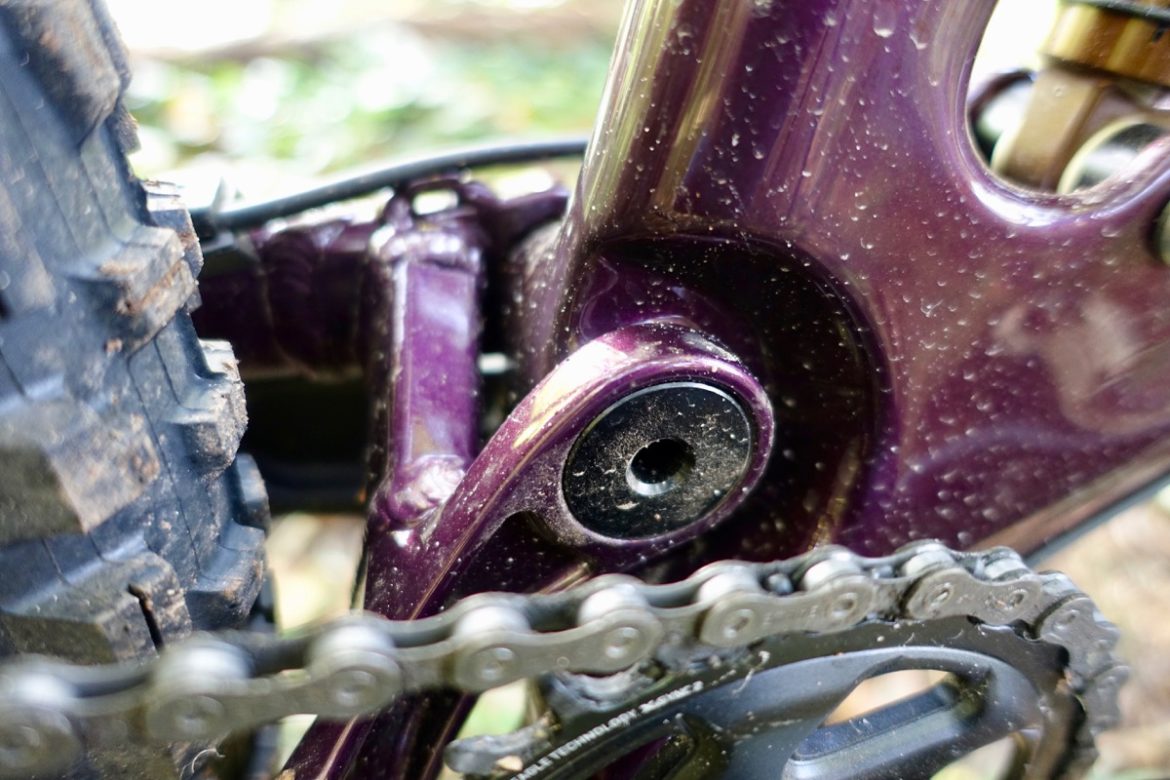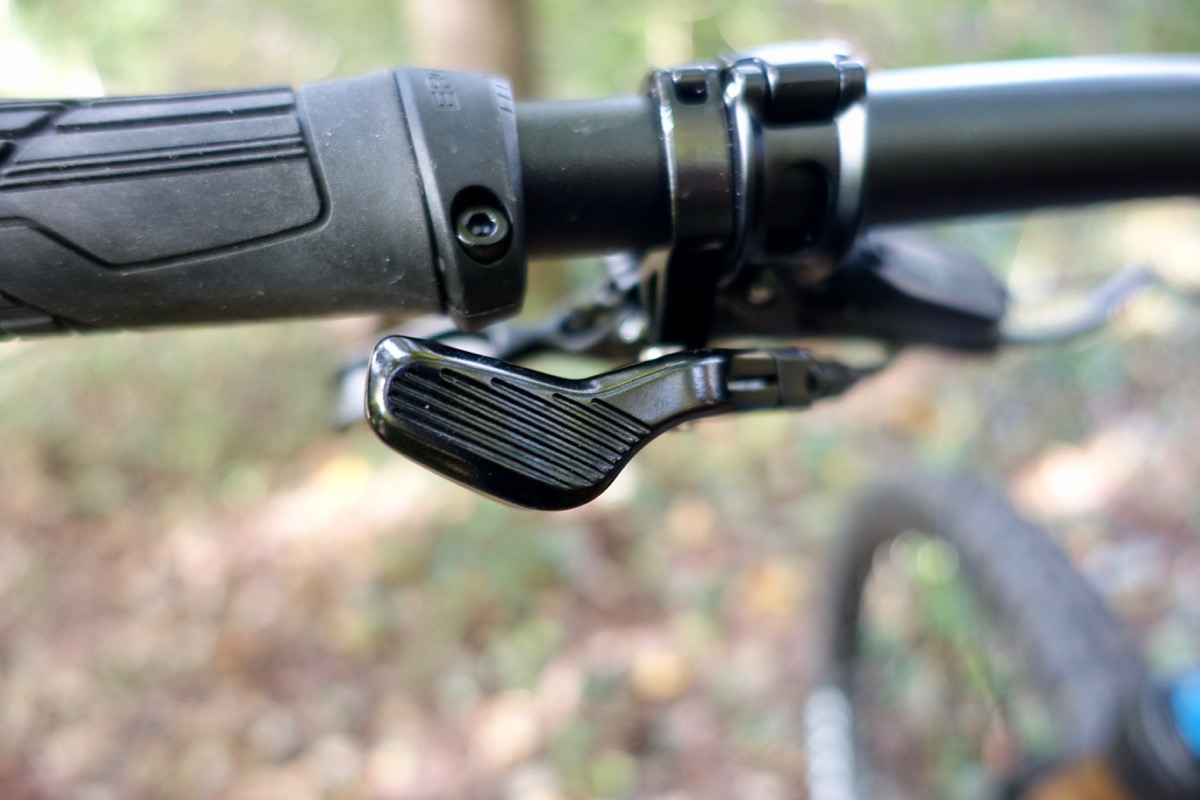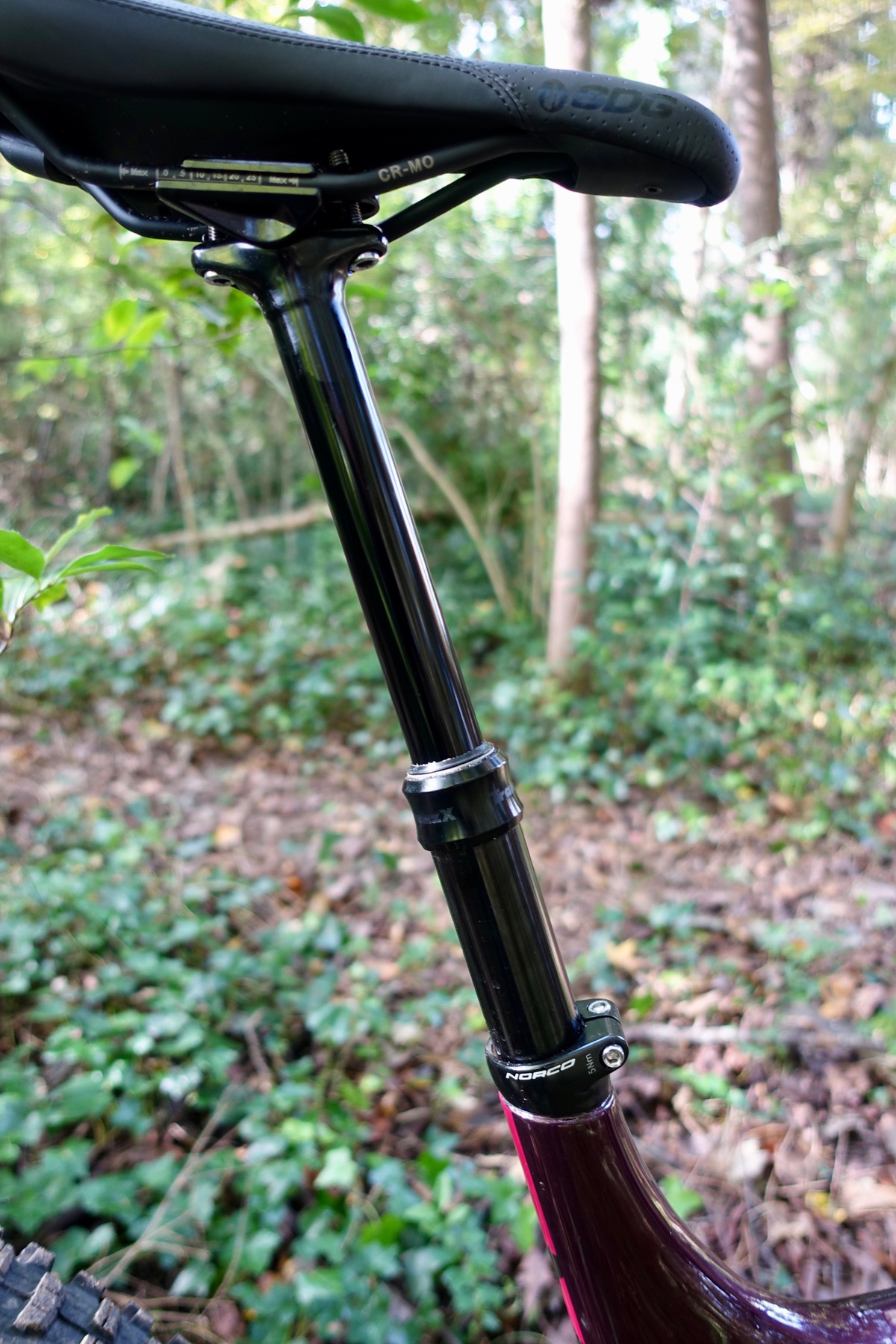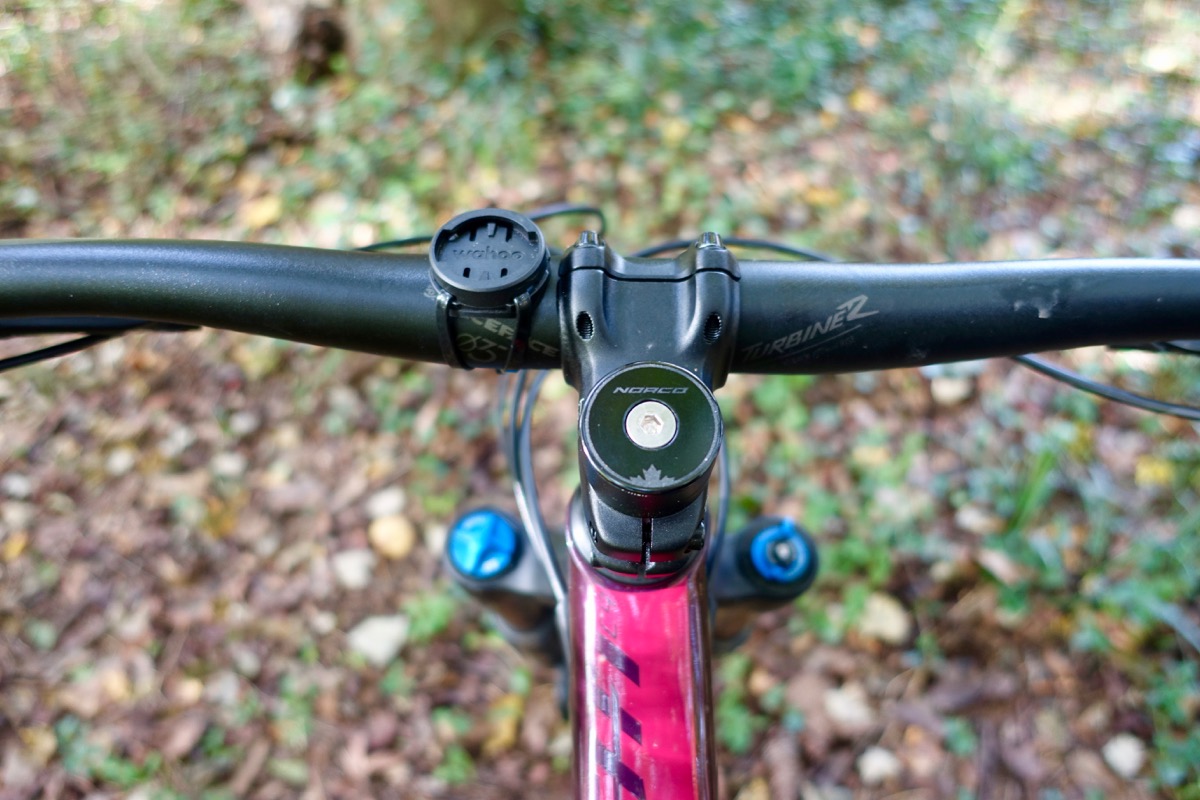
How do you make a good mountain bike even better? Why, just make it longer, lower, and slacker! Unfortunately it’s not that easy, especially when you’re talking about the Norco Sight, a bike that was already awesome. With Norco, improvements are measured in millimeters and tenths of a degree, and refinements are based on the distillation of a torrent of athlete, consumer, and engineering data.
The Sight
The Sight lives in what Norco dubs aggressive, all-mountain territory. Some brands might choose to call this an aggressive trail bike, while others might refer to it as a light-duty enduro rig. For Norco, all-mountain exists in the space between trail and enduro, and of the two all-mountain bikes the company markets, the Sight is the more aggressive one.
On paper, a 29er with 130mm of rear travel doesn’t sound all that aggressive, but it’s never a good idea to judge a bike by just one or two specs. I’ve been riding the 2019 Norco Sight for more than 3 months now and I can certainly vouch for its assertive, all-mountain chops.
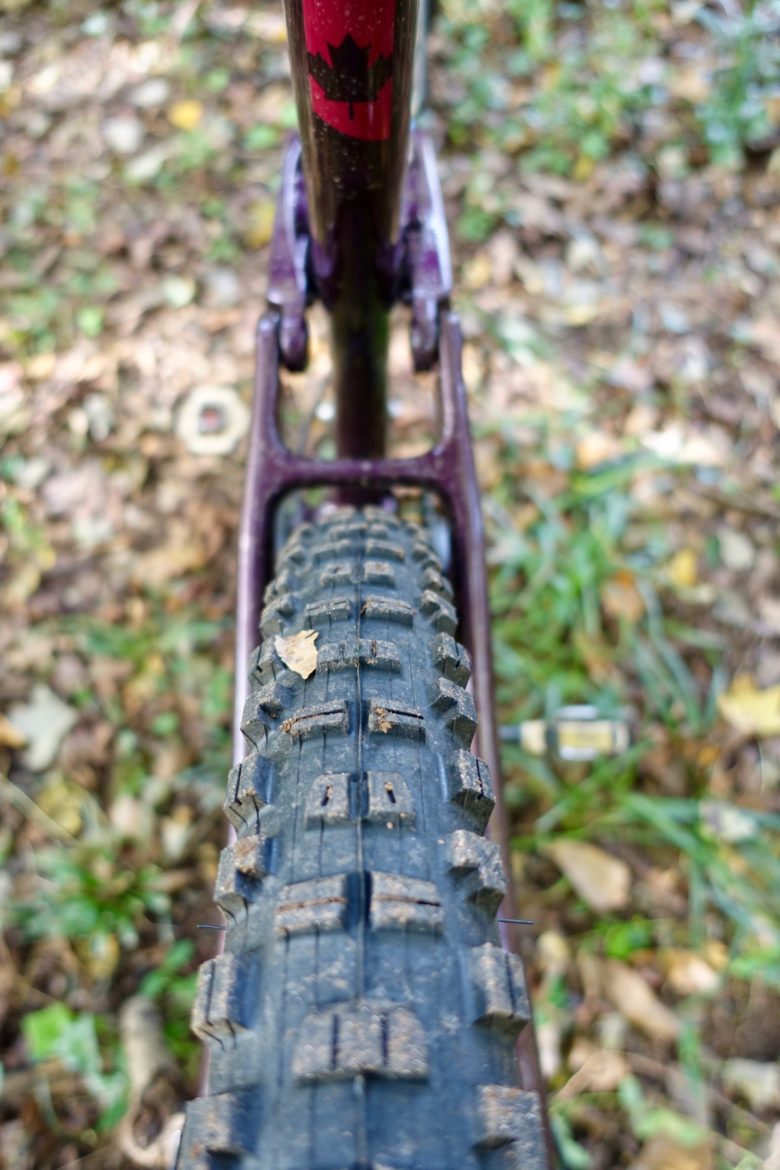
Those outside of Canada may not realize this, but Norco is a huge company, which means they have the scale to offer a number of options for each model in their lineup. Sight frames designed for 27.5-inch wheels with 140mm of rear travel are offered in all sizes from XS to XL, while 29er-specific frames with 130mm of rear travel are available in sizes M-XL. I’ve been riding the 29er model in an XL frame.

In addition to offering frames designed for multiple wheel diameters and in multiple sizes, the Sight is also available in both carbon and aluminum. I tested the carbon version, featuring a front triangle built on “premium carbon technologies” which, according to Norco, allows them to tune the material properties to deliver the same handling and ride feel regardless of the frame size. The carbon Sight uses an alloy rear triangle.
Geometry

Not only does Norco produce Sight frames for two different wheel sizes, they also vary the geometry of each frame based on the size. The brand calls this “Gravity Tune,” which notably varies the rear center (chainstay length) for each frame size. This is done to keep the bike balanced similarly across sizes and to provide a consistent ride feel. On my XL 29er Sight, the chainstays are 440mm long, which is 5mm longer than the size large frame.
Comparing the 2019 Norco Sight to the 2018 version, the geometry has undergone a number of tweaks. For starters, the new Sight 29er is indeed more slack, with a 66.5° head tube angle compared to 67° on last year’s model. This is certainly on the aggressive (slack) end of the spectrum as far as head tube angles go for 29ers with 130mm of rear travel.

The effective seat tube angle actually got more relaxed by half a degree to 73.2°, which runs counter to what one might expect. The unconventional thinking doesn’t stop there. The bottom bracket height on the new Norco Sight is not lower but higher by 3mm and the reach is shorter by 5mm at 475mm for the XL 29er. Overall the wheelbase grew 4mm on the XL 29er, which technically checks the “longer” box despite the shorter reach.
Kinematics

For those who don’t care to geek out on bike geo, it’s worth noting that Norco went from speccing a 140mm fork on the 29er Sight to a 150mm fork for 2019. The result is an even more capable front end.
In the rear, Norco still uses their Advanced Ride Technology (A.R.T.) design. A.R.T. is a Horst-link, 4-bar design that seeks to improve pedaling efficiency and resist braking feedback. Norco employs A.R.T. on many of their bikes, from trail to enduro, and tunes the system for each application. The bearings and machining on the linkages appear to be super high quality.
Build kit
Norco just launched a new program called Build Your Ride in the US and Canada that allows buyers to customize the build kit on their carbon Sight or Range. When I ordered my test bike late last year, I got to preview the process by speccing this review bike using a similar process. While it was tempting to just max out the build kit since I wasn’t paying, I decided to approach the project as if I were using my own money, choosing parts packages to maximize the bang for my virtual buck.
The first step is to choose either a 27.5″ or 29er frame, and the size. Buyers can also choose the frame and decal colors in this step. There’s even an option to select a women’s saddle and grips. Yes, I chose the Wine/Fuchsia color scheme on the test bike myself and I am quite happy with it, thank you very much. The base price for a carbon Sight frame is $2,150.
Next, buyers select a suspension kit that includes the fork and rear shock. Currently, Norco is showing more than half a dozen suspension kit combinations to choose from, with prices ranging from $950USD for a DVO Diamond fork and Fox Performance EVOL shock, up to $1,575 for a Fox 36 Factory fork and DPX2 Factory shock. I went with the top-of-the-line suspension package for a few reasons.
For starters, upgrading suspension down the line can be pricey, so if this were my own bike, I would want it to serve me well for years to come without having to put more money into the bike along the way. In my experience, Fox Factory suspension components offer an appreciable improvement in ride quality over less expensive parts so I knew I wanted them on this bike.
Not only that, the price difference between the least expensive suspension package and the most expensive isn’t a lot. Well sure, $625 is a lot of money, but it’s not bad when considering the cost of a complete bike. Not everyone will agree with this logic, but it’s served me well in past bike purchases.
Norco offers a similar number of component kits to choose from, and this is where buyers can really take the price of their build from reasonable to astronomical. Pricing seems to hinge largely on the drivetrain group selection, which makes sense when considering the retail price spreads between SRAM NX and XX1 groups, for example.
The least expensive, NX Eagle group, alloy bars and wheels, SRAM Guide T brakes, and a TranzX dropper post costs $1,199. The component kit jumps up to $4,349 at the high end for a SRAM X01 drivetrain with carbon cranks, SRAM Guide RSC brakes, carbon wheels, and a Rockshox Reverb dropper post. That’s an extra $3,150 for the same bike! Remember this the next time you complain about a bike brand charging too much for their bikes; pricing largely comes down to the components, not the frame.
Being the practical mountain biker that I am, I went with parts kit 3, ($1,849) which is one step up from the cheapest kit. This upgrades the drivetrain from NX to GX, and comes with slightly more powerful SRAM Guide RS brakes. It also swaps out the WTB I29 wheels for e13 TRS wheels which isn’t a huge change, but it does increase the rim width from 29mm to 30mm which should be slightly more future-proof as tires trend toward 2.5-2.6-inch widths.
Speaking of tires, all the builds ship with 2.5-inch Maxxis Minion EXO tires which is a great choice in my opinion. When moving up from parts kit 3 ($1,849) to parts kit 2 ($2,449) the only major things that change are the drivetrain (from a GX derailleur to an X01) and the dropper post (from the JD TransX to a Fox Transfer). Neither of these upgrades are significant enough for me to warrant spending another $600. Again, some may disagree, and that’s the great thing about the Build Your Ride program. Everyone can get what they want based on their personal preferences and priorities. You can play around with the various options here to see how the whole process works and to understand pricing.
My test bike weighs just a hair over 31lbs. right out of the box without pedals. The Sight shipped with all the goodies I needed to get everything set up, including an extra derailleur hanger. As configured, this test bike retails for $5,574USD.
On the trail

The Norco Sight is like a racehorse that is anxious to be let out of the barn. For my first few rides, I decided to stick to familiar trails close to home to get a feel for the bike. On tight, janky trails I quickly found myself frustrated that the bike wouldn’t go where I wanted it to go. And I suspect the Sight was just as frustrated with me, like an indignant thoroughbred being forced to trot in a circle while a little kid pulls on his mane.
On fast, wide-open trails the Norco Sight comes alive. This is a bike designed for stability and control at speed, and I found it to be exceptionally composed through long, rough descents. The suspension starts out supple but ramps up nicely to gloss over the occasional poor line choice. Many riders, myself included, might question whether 130mm of rear suspension is enough for an all-mountain bike. In my experience, it feels like much more travel and is able to handle everything this rider can dish out.
Toward the end of a big ride in the North Georgia mountains, I shot down a rutted, no-look, leaf-covered descent with barely a tap of the brakes. My riding buddy Paul literally dropped his jaw when he finally caught up.

2019 is such a good time to be a trail rider. With 12-speed drivetrains, it’s possible to climb just about anything without giving up the low end for times when you really want to go hard. The 150mm TransX dropper allows me to get the saddle in the proper position when it’s time to pedal, but totally gets out of the way when it’s party time. And the 800mm-wide handlebar, while a sworn enemy to the narrowly-spaced trees on my local chicken scratch singletrack, provides excellent control and even opens my stance to make breathing more comfortable. If this were my own bike I would probably shave 20mm off the bars to balance comfort and handling with raw tree clearance.
It’s clear Norco has optimized not only the stiffness of the carbon frame, but the pivot points and hardware as well, to minimize side-to-side flex. There are a lot of moving parts here, yet the bike feels responsive whether I am pedaling out of the saddle or maneuvering through obstacles.

The A.R.T. suspension system provides a mostly firm platform for pedaling, though it’s certainly not perfect. It really shines on technical climbs, where I found the rear end stays planted, providing excellent traction and minimizing skip bounces. The front end does feel a little lazy, but overall climbing is comfortable and seems to be as efficient as any other bike in this category.
Of course, nobody’s perfect, and I have some minor gripes with the Norco Sight. My biggest complaint, which fortunately happens to be the easiest to fix, is the choice of Ergon GE1 grips. It seems Norco specs a different set of grips for each of their stock builds, but honestly, most riders probably just want something fairly standard that provides decent quality. GE1 grips are no doubt high-quality, and many riders like them, especially for enduro riding. But for me, coming off standard, round-profile grips, they are uncomfortable. As I said, it’s an easy fix that also happens to be cheap.
The other thing to note is that the Norco Sight isn’t a quiver-killer, not that such a thing exists anyway. It isn’t a great choice for slow, tight, technical trails or steep, grinding climbs, but bikes that are truly great at that stuff will get left in the dust as soon a the trail opens up and points downhill.
In my opinion, Norco does a great job marketing the Sight for what it is: an aggressive all-mountain bike that’s going to be fast and fun going downhill, especially compared to other, less aggressive all-mountain bikes. It’s clear the Sight has been crafted and refined to deliver a quality, high-performance experience on the trail. And with the new Build Your Bike program, buyers can now spec this excellent trail bike based on their own budget and ride preferences.












